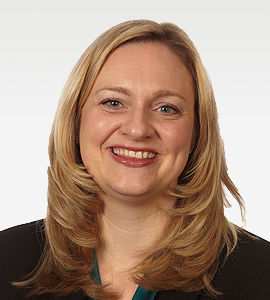In our previous post, we discussed Vituity's efforts to quantify the cost of provider turnover. Our research showed that turnover is costly not only in terms of dollars but also impacts throughput, clinical quality and patient satisfaction. What's more, these losses sometimes stretch as long as two years while the new provider settles in.
This led us to a new question: to what degree can turnover of clinical staff be prevented? To find the answers, we turned to the best source available: our own providers.
Getting to the Root Causes of Turnover
For this stage of the project, we decided to focus our initial efforts on physician assistants (PAs) and nurse practitioners (NPs).
There were a few reasons for this. First, these professionals are key to our organization's growth strategy. We absolutely need to recruit and retain qualified PAs and NPs in order to meet the challenges of healthcare reform and population health management.
Second, generally speaking, PAs and NPs tend to be more professionally mobile than physicians. A
2011 survey by Cejka Search and the American Medical Group Association found that the turnover rate among PAs and NPs was 12.6 percent — roughly twice that of the physician respondents. And in the current competitive hiring market, groups that don't provide a satisfying work experience risk losing their advanced practitioners to the competition.
In order to really understand what PAs and NPs want in a practice, we decided to go straight to the source. While we had some existing data gathered during routine satisfaction surveys, we really wanted to explore the context and meaning behind these answers. For example, if someone says they're burned out or that they don't feel like part of the team, what does that look like? And how does it impact their job satisfaction relative to other factors?
To really drill down into the subject matter, we held two daylong focus groups with our PA/NP team leads from around the country. Participants discussed both positive aspects and challenges of their practices and identified opportunities for growth.
Based on their direct feedback and input, we formulated six key recommendations for improving PA and NP satisfaction:
1. Include the PAs and NPs in the monthly Provider Group Meetings. Our PAs and NPs want to have a say in operational decisions and priority setting within their practices. We therefore recommend they be included in monthly department meetings alongside their physician teammates, where they can participate in discussions around recruiting, operations, client relations, finances and other important matters.
2. Practice financial transparency. As contributing members of the practice, PAs and NPs should be included in discussions of the sites finances. When they understand how their performance relates to the practice's financial health, their engagement increases.
3. Manage the fatigue and burnout associated with Rapid Medical Evaluation (RME). The stress of long shifts in the triage area is a real problem for our PA and NP colleagues. While we all recognize that RME is essential to our departments, there are strategies that can mitigate the associated stress. Rotation to other areas of the department, shorter or split shifts and having physicians share in the RME process are just a few strategies for dealing with this issue. It is important to our PAs and NPs that they remain clinically challenged, and managing the time spent in the RME process can help to keep our providers professionally satisfied.
4. Set expectations for physicians. Physicians (and all other team members) should be held accountable when it comes to our cultural values around teamwork. This means supporting the PAs and NPs, collaborating with them and appreciating their contributions.
5. Compensate fairly. Paying PA/NP salaries that are competitive within the geographic area should be a high financial priority for all of our practices.
6. Integrate the management. The lead PA/NP on each team should be included as an integral part of the site management team and share departmental leadership with the medical and nursing directors.
Change Takes Root
We asked, and our PAs and NPs have spoken. Our next challenge is to disseminate these principles and weave them into our organizational culture.
Because we're a large national organization, our logical first step was to engage our regional leadership. We presented our focus group results to our medical and regional directors, and their response was very positive. We then encouraged them to discuss these findings with their own teams.
We also launched a collaborative learning experience (based on IHI's collaborative change model) around PA/NP satisfaction in June 2015. Physician and PA/NP leaders at seven hospitals are working together to develop and implement action plans based on our clinicians' feedback. Along the way, they'll receive regular mentoring and coaching from some of our organization's strongest clinical leaders. So far, the initiative has been well received, with all participants very engaged. Despite the many competing priorities facing them, they are committed to improving the experience of their PAs and NPs.
In the future, we hope to give our medical directors more tools and real-time data to understand and make decisions about how the PA/NP side of the practice is functioning. To this end, we will be working to identify the most appropriate metrics, which might include turnover, local compensation data or employee satisfaction scores. We'll also need to create an infrastructure to track and report this data.
Exploring employee satisfaction at this deep level is a new journey for our organization, but it is already paying dividends. We hope that these efforts underscore how much we value our PAs and NPs — and want to create an organization where they would be happy to build a career.
























